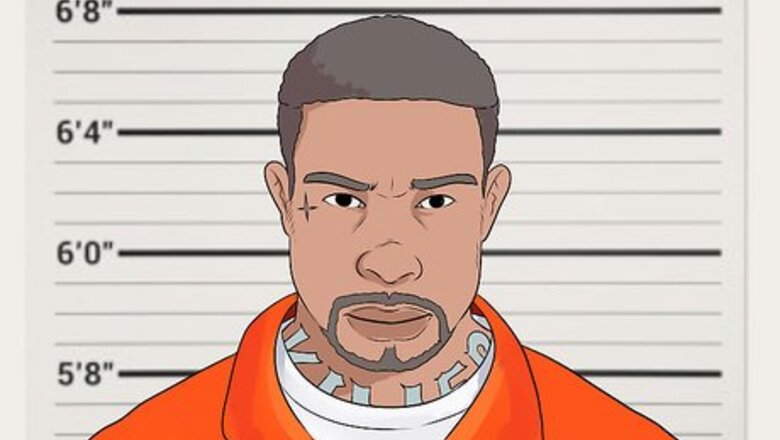
views
Brainstorming Ideas
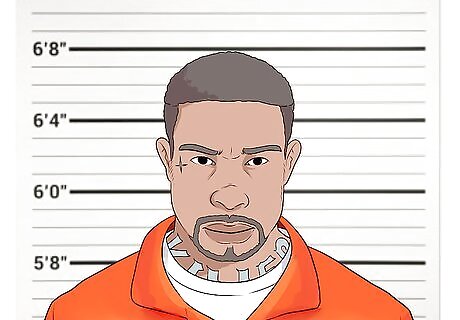
Base the villain on a real person. Pick someone in your life that you think is a little bad or complicated. Choose a celebrity or a notorious criminal from the news as a model for the villain. Combine parts of several people to create the villain. For example, you may use a serial killer from your hometown as the inspiration for your villain. Or you may pick a relative who did horrible things as the model for your villain.
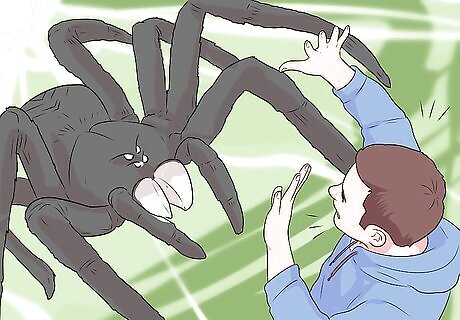
Use your biggest fear to create the villain. Think about what you fear most and then use that fear to come up with a villain for your story. Maybe you fear death, and you make your villain an embodiment of death. Or maybe you fear spiders, so your villain is a giant spider. If you are afraid of your villain on some level, your reader will feel this and respond to it. For example, the villain in Stephen King’s Misery is inspired by his addiction to drugs and alcohol. King was afraid of his addiction so he turned it into a villain for his novel.

Make the villain similar to your protagonist. Your villain should share similar traits and qualities as the protagonist, or hero, of your story. They may share them same childhood experiences or feel the same sense of loneliness in the world. You can make their morals and values different, but they should also have some overlap so the reader can sympathize with both characters. For example, you may have a villain who shares the same need to belong or feel wanted by their family as the protagonist has. The villain may decide to take violent action to achieve their goal, while the protagonist tries peaceful action instead.

Avoid using abstract concepts like disease, war, or a corporation as the villain. Abstract concepts can be difficult for readers to grasp and make them feel little empathy or sympathy. Avoid them, as they can be difficult to get readers to connect to. If you do want to use an abstract concept as the villain, make the concept into a character the reader can see on the page. For example, you may use a sinister businessman to represent a corporation. Or you may use an arms dealer as a representation of war.
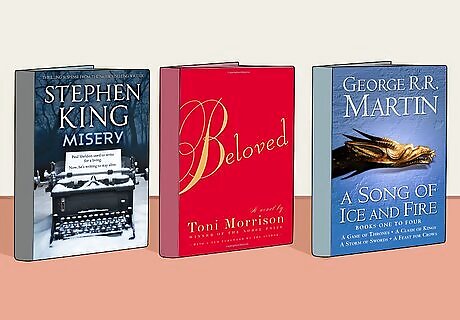
Read examples of strong villains in fiction. Look at villains in several genres of writing. Notice how the author makes the villain believable and engaging for the reader. Pay attention to how they describe their physical characteristics and how they create backstory for the villain. You may read: Misery by Stephen King. Beloved by Toni Morrison. A Song of Ice and Fire by George R.R. Martin. The Final Problem by Sir Arthur Conan Doyle. The Talented Mr. Ripley by Patricia Highsmith.
Giving the Villain a Backstory
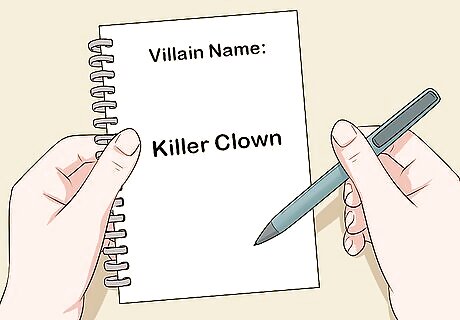
Give the villain a distinct name. Their name should make them stand out from the crowd and give off sinister undertones. It may relate to a nickname they were given as a child or to an event in their past. It may also connect to their physical features. For example, the villain “Voldemort” in the Harry Potter series has a name that sounds sinister and threatening. The villain “Mr. Tom Ripley” in The Talented Mr. Ripley has the word “rip” in his name, indicating violence and destruction.

Outline the villain’s dark past. Build empathy for the villain by creating a backstory that includes a troubled childhood or a dark past. Rather than have the villain be born evil, show the reader how they came to be evil. Explore their past and the events that led up to their turn to the dark side. For example, you may give the villain a violent childhood where they were bullied by their peers or abused by their parents. Or you may have a villain who was victimized by a predator when they were young and this resulted in their turn to evil. You can also give the villain feelings of being unloved or underappreciated by a parent or a sibling. This could then lead them to feel angry and vindictive.

Identify when the villain became evil. Determine the key moment or experience where the villain shifted or changed and embraced their inner darkness. Include the moment as a scene in your fiction to show the reader when the villain became evil. The moment could have happened in childhood where the villain felt neglected or unloved. Or it could be an experience in adulthood that was traumatic and scarring for them. For example, you may have a villain who turned when they were humiliated by bullies at school in front of someone they loved. Or you may have a villain who became evil when they watched their family be murdered.

Determine the villain’s core values and beliefs. Even villains will have an honor system or a moral code that they live by. Think about what your villain values and believes in life. You can give them skewed or messed up values as long as you show they have a moral code of their own. This will help to make them more believable to your readers. For example, you may have a villain who believes in the rule of law, no exceptions. This may then make them villainous because they treat poor people who steal with disdain and seek to prosecute the less fortunate with no mercy.
Making the Villain Complex and Credible

Allow the villain to have positive traits. Do not only give your villain bad or evil traits, as this will make them one-dimensional and flat. Instead, give them positive traits that show their humanity. Allow your villain to be good in some aspects so they are complex and relatable for readers. For example, you may have a villain who loves their family and will do anything to protect them. Or you may have a villain who has a soft spot for animals. In fact, giving your villain more positive traits might even make them more scary. A villain who abuses children/animals, robs banks, and burns down buildings is certainly evil, but it might be even scarier that they have good traits. For instance, they might have someone (a child, sibling, cousin, parent, friend, etc) that they want to keep safe, which might remind the reader that anyone could turn into that villain.
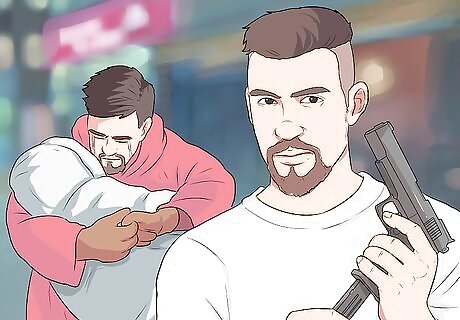
Give the villain a goal or desire that drives the action of the story. Their goal or desire may be wrong or ill-conceived, but they should have a goal nonetheless. Show the reader what the villain wants in your story so your reader can feel they are a living, breathing character. The villain's goal can also keep the story moving forward and give it higher stakes. For example, you may have a villain who wants to get revenge for the murder of their family when they were a child. Or you may have a villain who wants to have friends and to be loved.
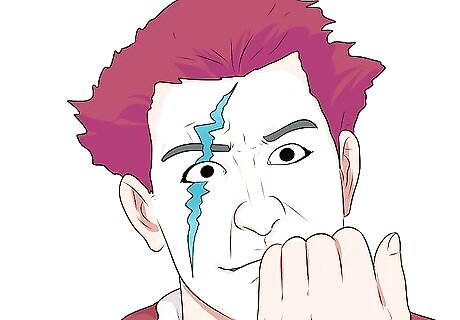
Describe the villain with vivid detail. Be specific about how the villain walks, talks, and moves in your story. Give the villain features that stand out, such as a scar on their face or a limp in their walk. You can also give them habits and tics that show they are nervous, uneasy, or upset. For example, Stephen King describes the villain Annie Wilkes in Misery as: “Her nostrils flared regularly, like the nostrils of an animal scenting fire … That stony, obdurate look covered her face like a mask … Only her eyes, those tarnished dimes, were fully alive under the shelf of her brow.” This description ties Wilkes’ physical appearance to dangerous elements like fire and uses adjectives like “tarnished” and “stony” to make her appear hard and damaged.

Give your villain a distinct way of speaking. Make their dialogue particular to them as a character. Think about how your villain might talk in a scene and give them as much personality as your protagonist through dialogue. For example, you may have a villain who uses a formal way of speaking, even when they are saying awful or disturbing things. Or you may have a villain who barely speaks and only says one word, the same word, before doing something bad to a character. Take inspiration from classic bad-guy lines, such as, “Say goodbye to your dreams,” or “Did you really think you could defeat me?”
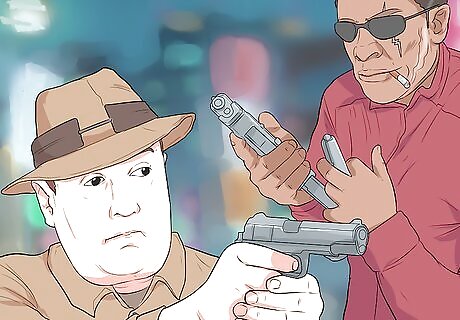
Make the villain just as smart and capable as the protagonist. The villain should be on your protagonist’s level, with an equal amount of brains and brawn. They should feel like a worthy match for the protagonist, as this will push the story forward and challenge the protagonist. A capable villain will be way more interesting to readers than one who is bumbling or foolish. For example, the villain Professor Moriarty in the Sherlock Holmes series is just as smart and clever as the great Sherlock Holmes. He proves to be a real challenge to Holmes and makes the stakes much higher in the story.

Put the protagonist and the villain in conflict with each other. Make sure the villain gets in the way of your protagonist as much as possible. The villain should act as an obstacle and a source of conflict for your protagonist. The villain and the protagonist should clash with each other regularly to add tension to your story. For example, you may have a villain who targets someone the protagonist loves as their next victim. The protagonist may then have the goal of saving the person they love, while the villain wants to harm that person. They later may both clash with each other as they fight to each get what they want.



















Comments
0 comment